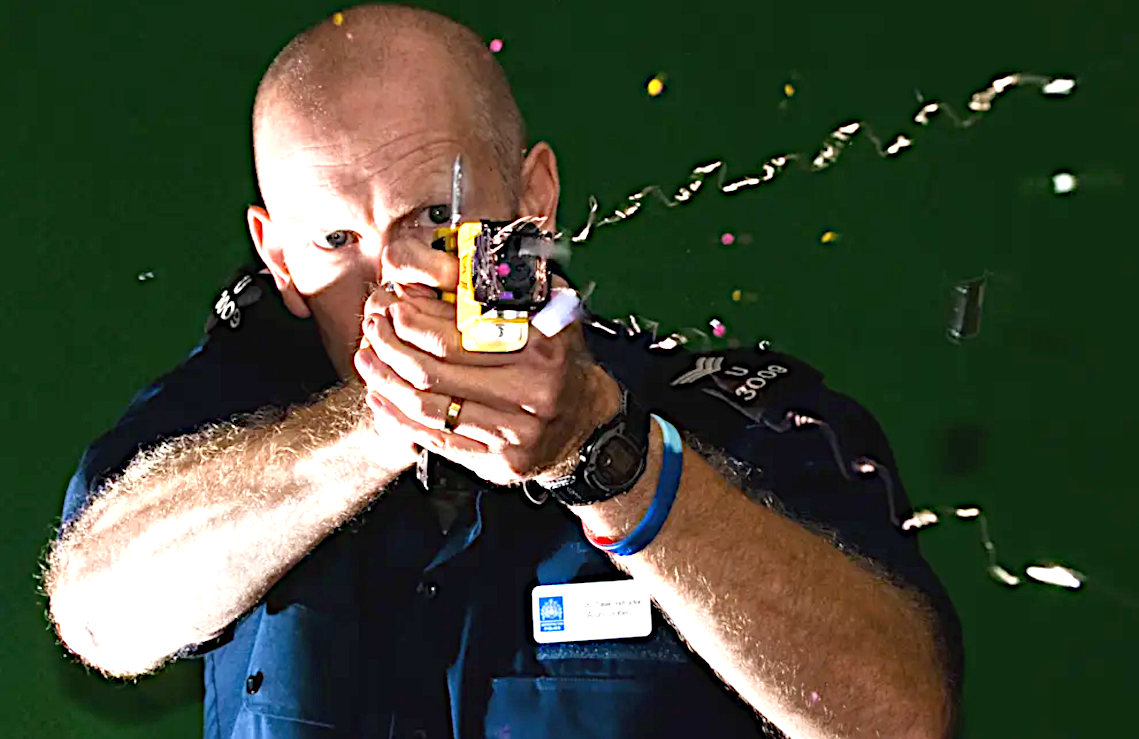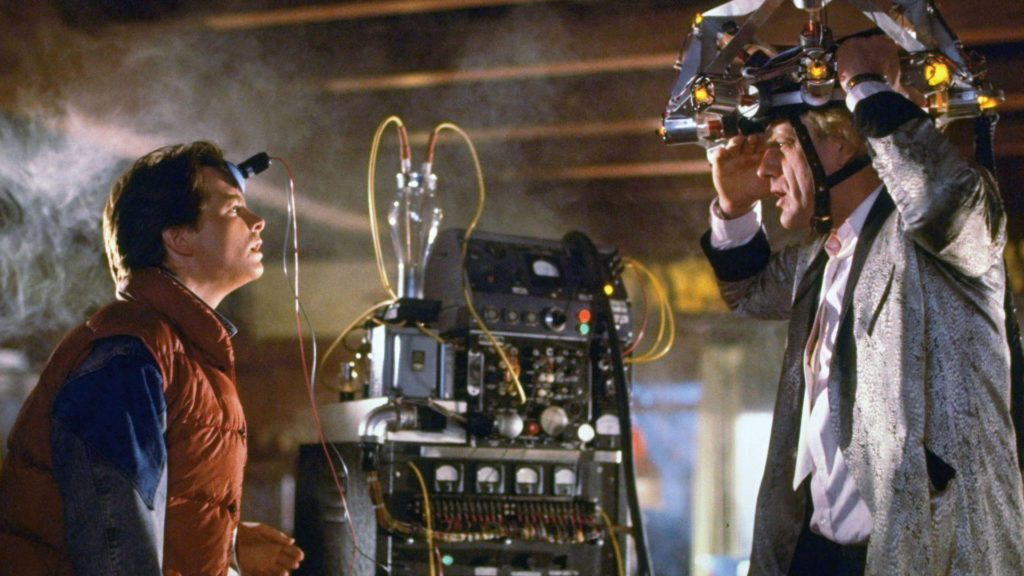|

Controversial,
but more effective, and potentially safer - if used in place
of firearms.
The
Elizabeth
Swann is equipped with non-lethal Taser equipment. Each
crew member has a recognition device, in addition to facial
recognition, so that they cannot be Tased by the ships
security system.
There
is an important distinction between lethal, less-lethal and
non-lethal. The Swann
uses a system to stun, or cause slight discomfort, via an
electric shock. For this to work a very low amperage, and
high voltage electricity
flow is used. Unlike the systems used by police or military.
Where the subjects can die, and suffer considerable pain.
Cattle
are controlled by electric fences, at low levels of shock
treatment.
Unauthorized
visitors to the ship, may be Tased, if Hal or a crew member
does not sanction boarding - or are not recognized. Equally,
the system may be overridden in some circumstances. Such as
open days, or other events.
Pirates
are the main target. Generally, pirates are recognised by
their behaviour and approach patterns. These triggers would
automatically arm the Elizabeth
Swann. Green laser light (also non lethal levels) may
also be deployed where the ship is under a determined
attack. Including complete immobilization, if a situation
demands.
WHAT
IS A TASER?
A taser is an electroshock weapon
(typically 50,000 volts) used to incapacitate people allowing them to be approached and handled in an unresisting and thus safe manner. It is sold by Axon, formerly TASER International. It fires two small barbed darts intended to puncture the skin and remain attached to the target, at 55 m/s (120 mph; 200 km/h). Their range extends from 4.5 m (15 ft) for non-Law Enforcement Tasers to 10.5 m (34 ft) for LE Tasers. The darts are connected to the main unit by thin insulated copper wire and deliver a modulated electric current designed to disrupt voluntary control of muscles, causing "neuromuscular incapacitation". The effects of a taser may only be localised pain or strong involuntary long muscle contractions, based on the mode of use and connectivity of the darts.
Tasers are marketed as less-lethal, since the possibility of serious injury or death exists whenever the weapon is deployed. At least 49 people died in the US in 2018 after being shocked by police with a Taser.
The first taser conducted energy weapon was introduced in 1993 as a less-lethal force option for police to use to subdue fleeing, belligerent, or potentially dangerous people, who would have otherwise been subjected to more lethal force options such as firearms. As of 2010, according to one study, over 15,000 law enforcement and military agencies around the world used tasers as part of their use of force continuum. There has been some controversy attending its use on children, and as to whether it constitutes a form of torture.
A 2009 report by the Police Executive Research Forum in the United States found that police officer injuries dropped by 76% in large law enforcement agencies that deployed taser devices in the first decade of the 21st century compared with those that did not use them at all. TASER International and its CEO Rick Smith have claimed that unspecified "police surveys" show that the device has "saved 75,000 lives through 2011". A more recent academic study suggested police use of conducted electrical weapons in the United States was less risky to police officers than hands-on tactics, and showed officer injury rates equal to use of chemical sprays such as oleoresin capsicum. However, when police combined conducted electrical weapons with use of other weapons, officers were four or five times more likely to be injured than when using a baton or chemical spray.
TORTURE
A report from a meeting of the United Nations Committee Against Torture states that "The Committee was worried that the use of TASER X26 weapons, provoking extreme pain, constituted a form of torture, and that in certain cases it could also cause death, as shown by several reliable studies and by certain cases that had happened after practical use." Amnesty International has also raised extensive concerns about the use of other electro-shock devices by American police and in American prisons, as they can be (and according to Amnesty International, sometimes are) used to inflict cruel pain on individuals. Maurice Cunningham of South Carolina, while an inmate at the Lancaster County Detention Center, was subjected to continuous shock for 2 minutes 49 seconds, which a medical examiner said caused cardiac arrhythmia and his subsequent death. He was 29 years old and had no alcohol or drugs in his system.
In response to the claims that the pain inflicted by the use of the TASER device could potentially constitute
torture in violation of their Human Rights, Tom Smith, the Chairman of the TASER Board, stated that the U.N. is "out of touch" with the needs of modern policing and asserted that "Pepper spray goes on for hours and hours, hitting someone with a baton breaks limbs, shooting someone with a firearm causes permanent damage, even punching and kicking
- the intent of those tools is to inflict pain, ... with the TASER device, the intent is not to inflict pain; it's to end the confrontation.
Regardless,
of the view taken by Mr Smith, the use of tasers to torture
subjects, should result in prosecution against malfeasance
in public office. Where torture cannot be sanctioned by any
police or military authority. In addition to HR claims,
under Article 3 of the European Convention, or Article
5 of the Universal Declaration, that may also attract
civil damages by way of just satisfaction.
EMD ELECTRO MUSCULAR DISRUPTION - DRIVE STUN CAPABILITY
Some TASER device models, particularly those used by police departments, also have a "Drive Stun" capability, where the TASER device is held against the target without firing the projectiles, and is intended to cause pain without incapacitating the target. "Drive Stun" is "the process of using the EMD (Electro Muscular Disruption) weapon as a pain compliance technique. This is done by activating the TASER [device] and placing it against an individual's body. This can be done without an air cartridge in place or after an air cartridge has been deployed."
Guidelines released in 2011 by the U.S. Department of Justice recommend that use of Drive Stun as a pain compliance technique be avoided. The guidelines were issued by a joint committee of the Police Executive Research Forum and the U.S. Department of Justice Office of Community Oriented Policing Services. The guidelines state "Using the CEW to achieve pain compliance may have limited effectiveness and, when used repeatedly, may even exacerbate the situation by inducing rage in the subject".
A study of U.S. police and sheriff departments found that 29.6% of the jurisdictions allowed the use of Drive Stun for gaining compliance in a passive resistance arrest scenario, with no physical contact between the officer and the subject. For a scenario that also includes non-violent physical contact, this number is 65.2%.
A Las Vegas police document says "The Drive Stun causes significant localized pain in the area touched by the TASER [CEW], but does not have a significant effect on the central nervous system. The Drive Stun does not incapacitate a subject but may assist in taking a subject into custody." The UCLA TASER device incident and the University of Florida TASER device incident involved university police officers using their TASER device's "Drive Stun" capability (referred to as a "contact tase" in the University of Florida Offense Report).
Amnesty International has expressed particular concern about Drive Stun, noting that "the potential to use TASERs in drive-stun mode—where they are used as 'pain compliance' tools when individuals are already effectively in custody—and the capacity to inflict multiple and prolonged shocks, renders the weapons inherently open to abuse".


REFERENCES
https://
|


